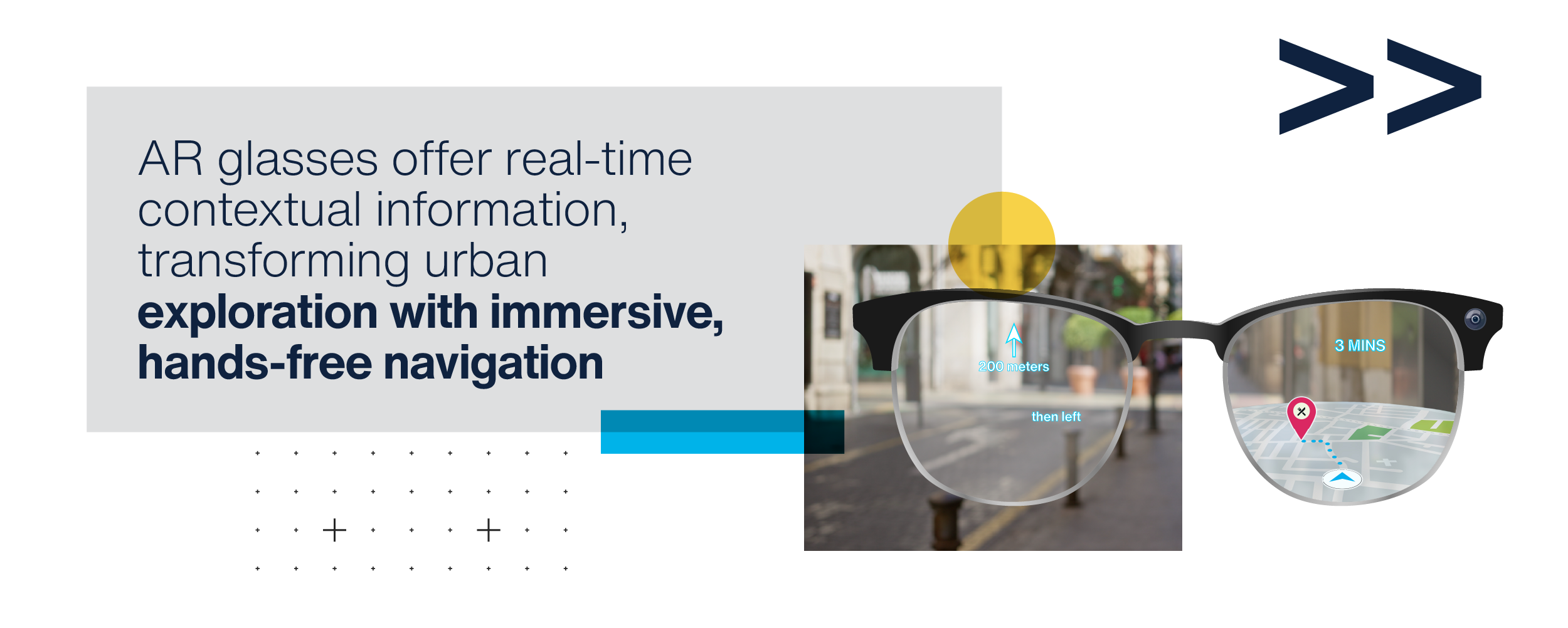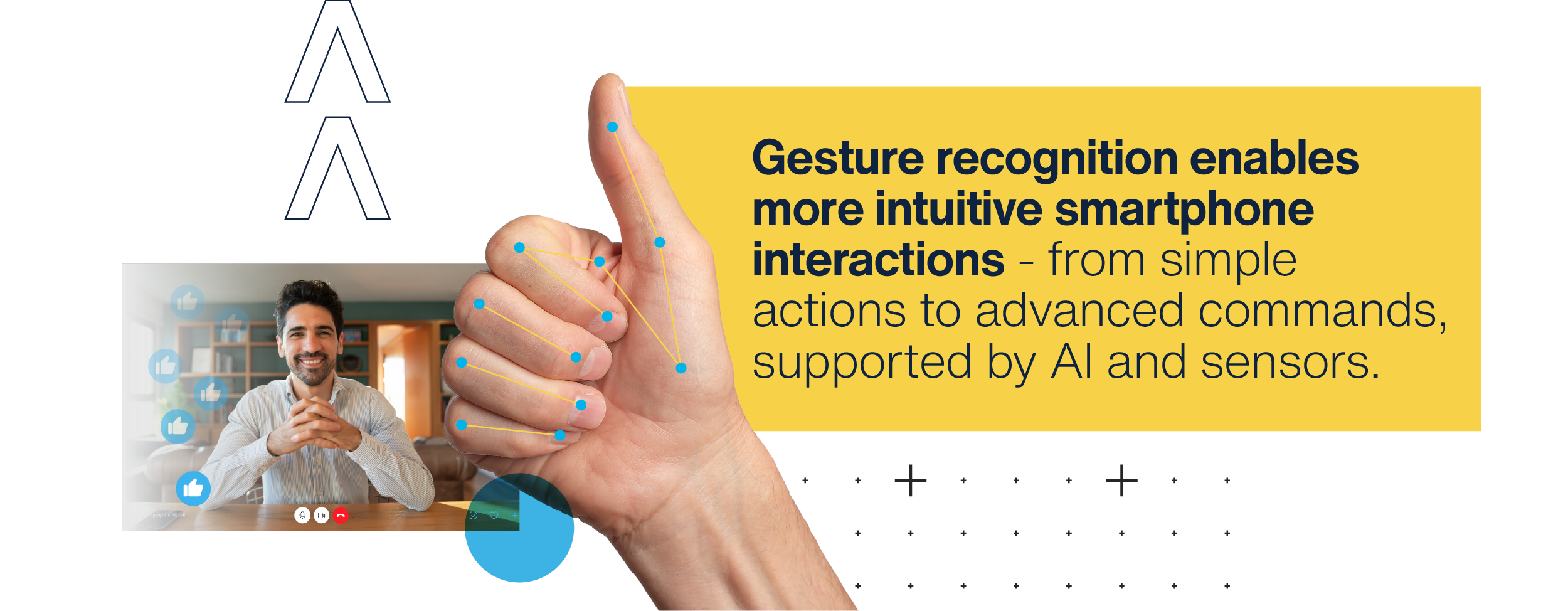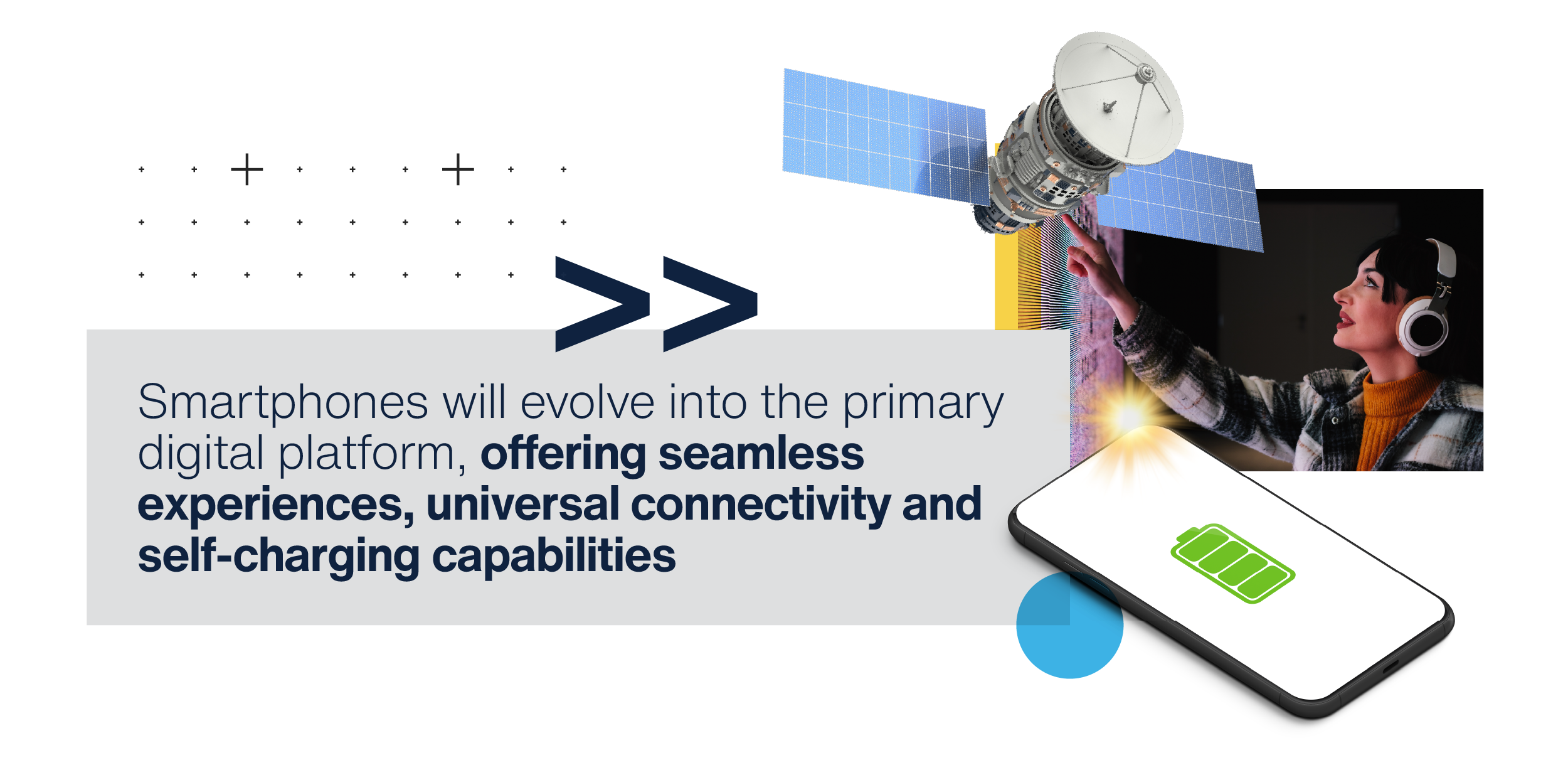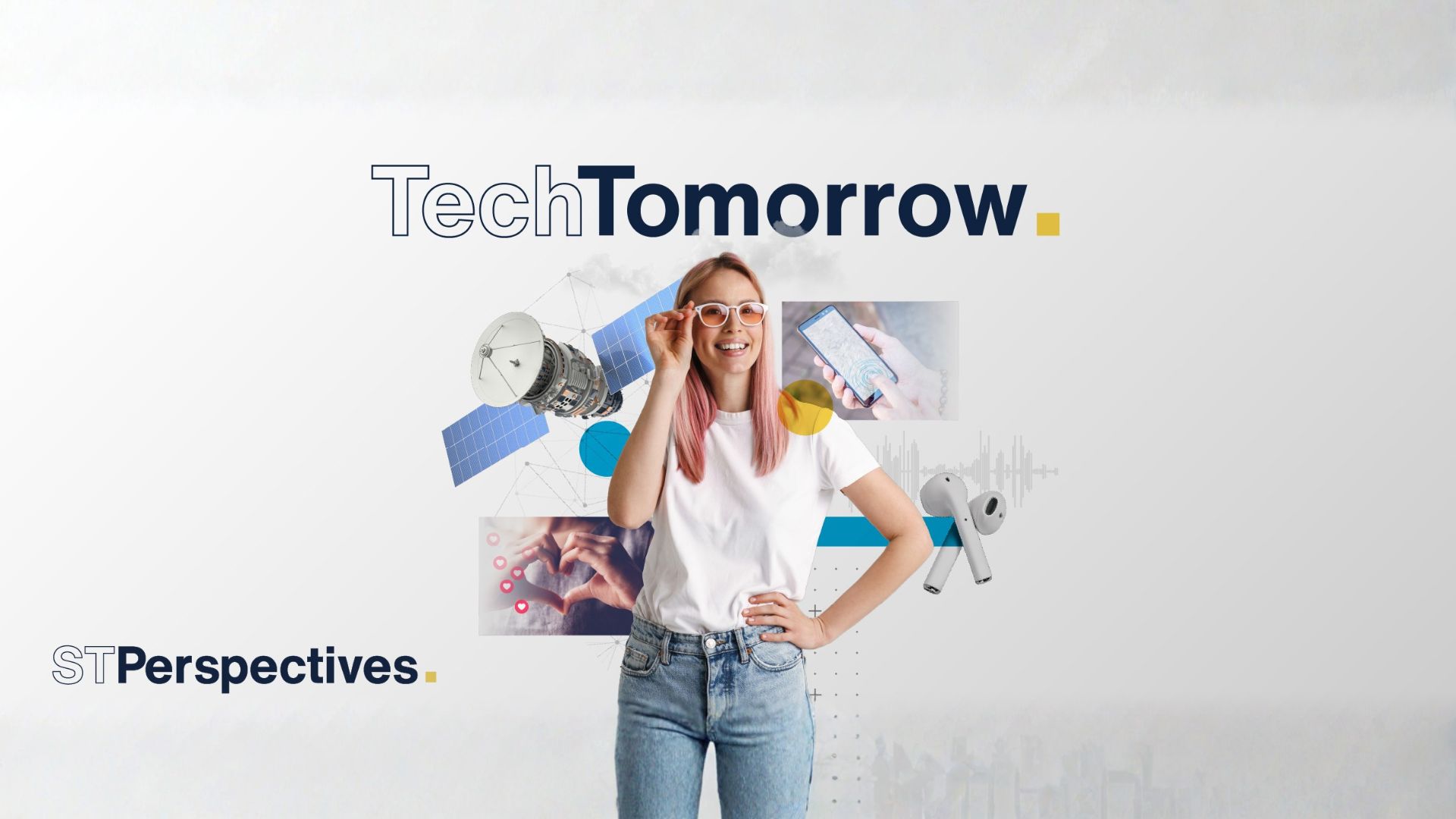Smartphones have become some of the most ubiquitous devices in modern history. For most of us, the smartphone is an indispensable tool to not only communicate, but to manage our lives – work, personal relationships, travel, shopping, entertainment, photography, video creation. In short, smartphones have become a hub for life.
The touchscreen was transformational in the smartphone’s adoption and use. But in the future, the smartphone is set to become a platform for immersive experiences. And when aligned to innovations that will extend battery life and even see smartphones harvesting their own energy, along with new ways to stay constantly connected, their usefulness will only increase.
A powerful processor in your pocket
Smartphones have become incredibly powerful processing devices. Indeed, in comparison to the most powerful supercomputers of the 1980s, today’s smartphones can process information more than 5,000 times faster.
In some ways, however, the way that we interact with our smartphones has progressed least since their arrival. For many people, the touchscreen remains the primary – if not only – way that they access and view the interactive services and rich experiences provided by their smartphone. The coming years will see that transformed and, with it, the idea of what a smartphone is.
A reduced reliance on the smartphone display as the principal way to interact with the device and receive information fundamentally changes the role of the smartphone. As a powerful computing device in its own right, but also connected to cloud-based computing resources, the smartphone potentially becomes a platform for delivering immersive experiences and valuable services to the user in numerous new ways.
New models for smartphone interaction
Voice assistants have become one of the first steps into a new world of accessing services via our smartphones. Whether issuing voice commands and queries directly into the device or having these relayed via connected headphones and earbuds, consumers are realising the convenience of voice and audio interaction. An additional benefit, of course, is that the smartphone itself can remain in a pocket or bag, out of harm’s way.
Eyeglasses featuring augmented reality (AR) display technology are an ideal solution. These can visually display directions in the user’s eyeline, while also overlaying other useful or interesting information. With more information and experiences layered over the real world, discovering a new city will be more rewarding than ever before, with less potential for a misstep along the way.  Artificial intelligence (AI) will also enable proactive and predictive services that help us manage our daily lives. For example, by understanding the current traffic conditions, AI might bring an alert for your next meeting across town 30 minutes earlier. With the alert appearing on your smartwatch, more efficient travel could be proposed, with directions to the closest public transport appearing in your eyeglasses’ AR display.
Artificial intelligence (AI) will also enable proactive and predictive services that help us manage our daily lives. For example, by understanding the current traffic conditions, AI might bring an alert for your next meeting across town 30 minutes earlier. With the alert appearing on your smartwatch, more efficient travel could be proposed, with directions to the closest public transport appearing in your eyeglasses’ AR display.
Gesture recognition and haptic feedback
Gesture recognition is emerging as another way to interact with services provided by smartphones. Less obvious that either using a touchscreen or voice, subtle gestures to make or answer calls or respond to messages will be quick and convenient methods of interaction. Who knows, you might well respond to the latest message received with an actual thumbs up, rather than having to find and type the emoji itself. 
We might be on the cusp of a whole new vocabulary of gestures as commands. Google is one company looking at how devices can be controlled by natural human gestures, many of which we use subconsciously. Other advances in hardware, such as the latest generation of Time-of-Flight (ToF) sensors, will support more accurate detection of gestures in and around smartphones.
Haptic feedback is the use of vibrations or sensations to enrich the experience of using a device. At a basic level, most of us already experience haptic feedback in our smartphone use. Vibrations rather than a ringtone to signify an incoming call is a simple example, but the nature and application of haptic feedback is rapidly evolving.
Imagine shopping online and being able to ‘feel’ different types of fabric through haptic feedback via your smartphone’s screen. Subtle vibrations from different parts of smart eyeglasses could be used to enrich visual experiences or help with directions. Research is even looking at ultrasound and “mid-air” haptics, where the sensation of physical touch is created in the air. Such haptic feedback could augment gesture control or enhance touchless interfaces.
The potential for neural interfaces
Though still in its early stages, the idea of interacting with devices merely by thinking is becoming more real. Various non-invasive neural interfaces are in development.
Electroencephalography (EEG) sensors placed on the head via headsets, or potentially even embedded in hats and headbands, are a direct way to tap into the brain’s activity. Neural wristbands detect signals from nerves connecting the brain to an individual’s hands, whereby just thinking about a gesture or action could act as a command.
So-called “silent speech” interfaces detect subtle changes in expression or movements in vocal chords, where simply mouthing words would be detected as accurately as voice. Data from wearables such as smartwatches, rings, and earbuds, could identify cognitive load and emotional state, triggering proactive alerts, suggestions, or experiences to help alleviate issues.
Projecting further into the future, neural interfaces and advanced haptic feedback could be combined to create a new world of deeply immersive experiences, all powered by the not-so-humble smartphone.
Always connected
Of course, this vision of the smartphone as a platform for new services and experiences relies on an almost constant connection to cloud-based computing resources. Fortunately, alongside the innovations in smartphone interface technologies, we’re seeing continued development of technologies that ensure we remain connected, wherever we are.
As we recently highlighted, the need to connect the world of increasingly intelligent “things” – not only smartphones, but billions of sensors, machines, and consumer products – is being supported by innovation in communications technology. This includes further evolution of established infrastructure, with 6G telecommunications networks arriving in the coming years, but also the significant expansion of satellite-based communications networks.
When the smartphone arrived it was exactly that: a phone with additional capabilities. We can all appreciate how far it has moved beyond that simple description, and over a relatively short period of time. While we might need a new name for the device, we certainly need to change our understanding of what this powerful pocket processing device represents.  New ways to interact with our smartphones, innovation in the delivery of seamless immersive experiences, universal connection, and improved battery life and self-charging, will see them become the primary digital platform for every aspect of our lives.
New ways to interact with our smartphones, innovation in the delivery of seamless immersive experiences, universal connection, and improved battery life and self-charging, will see them become the primary digital platform for every aspect of our lives.
- Discover our Time-of-Flight sensors
